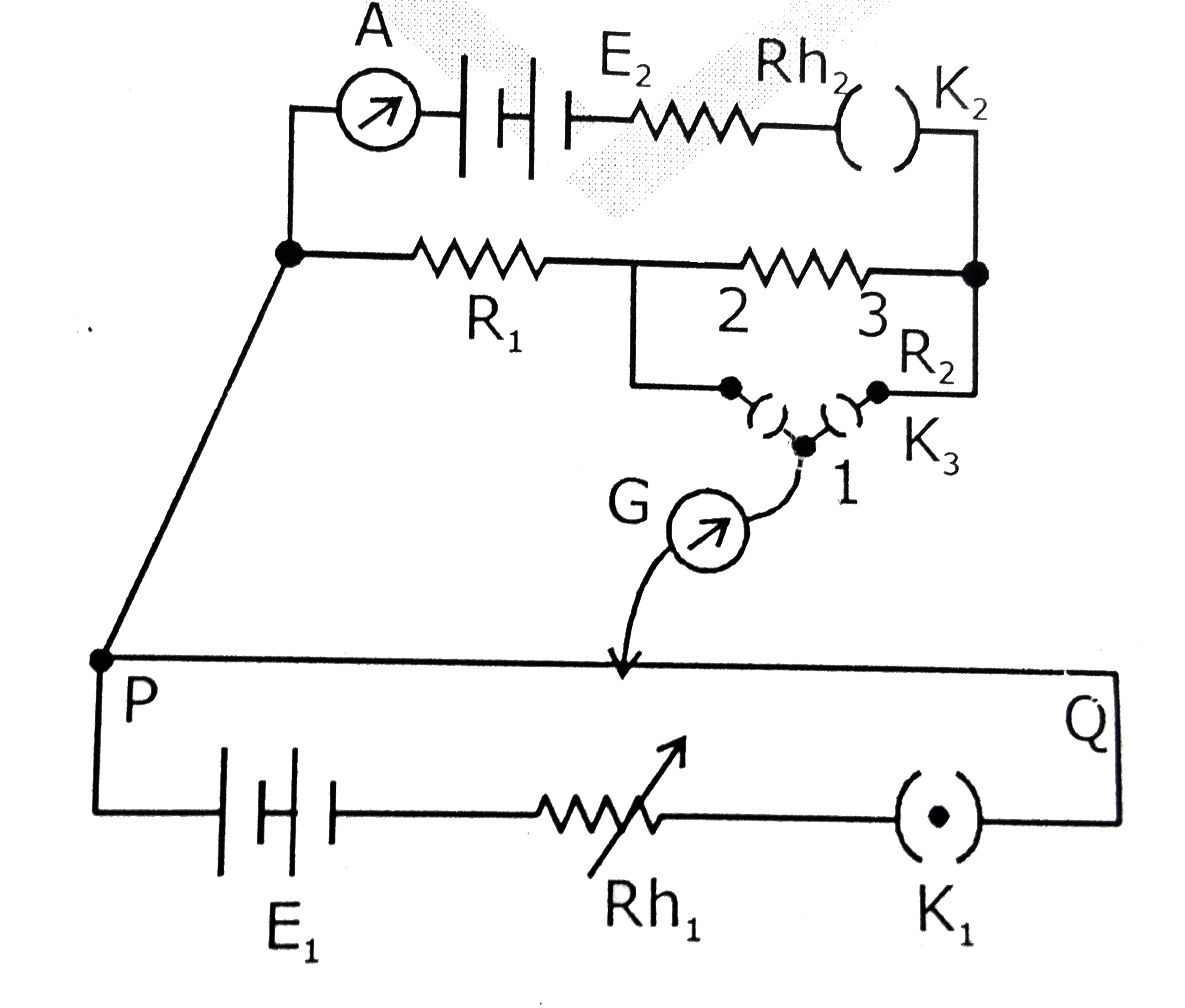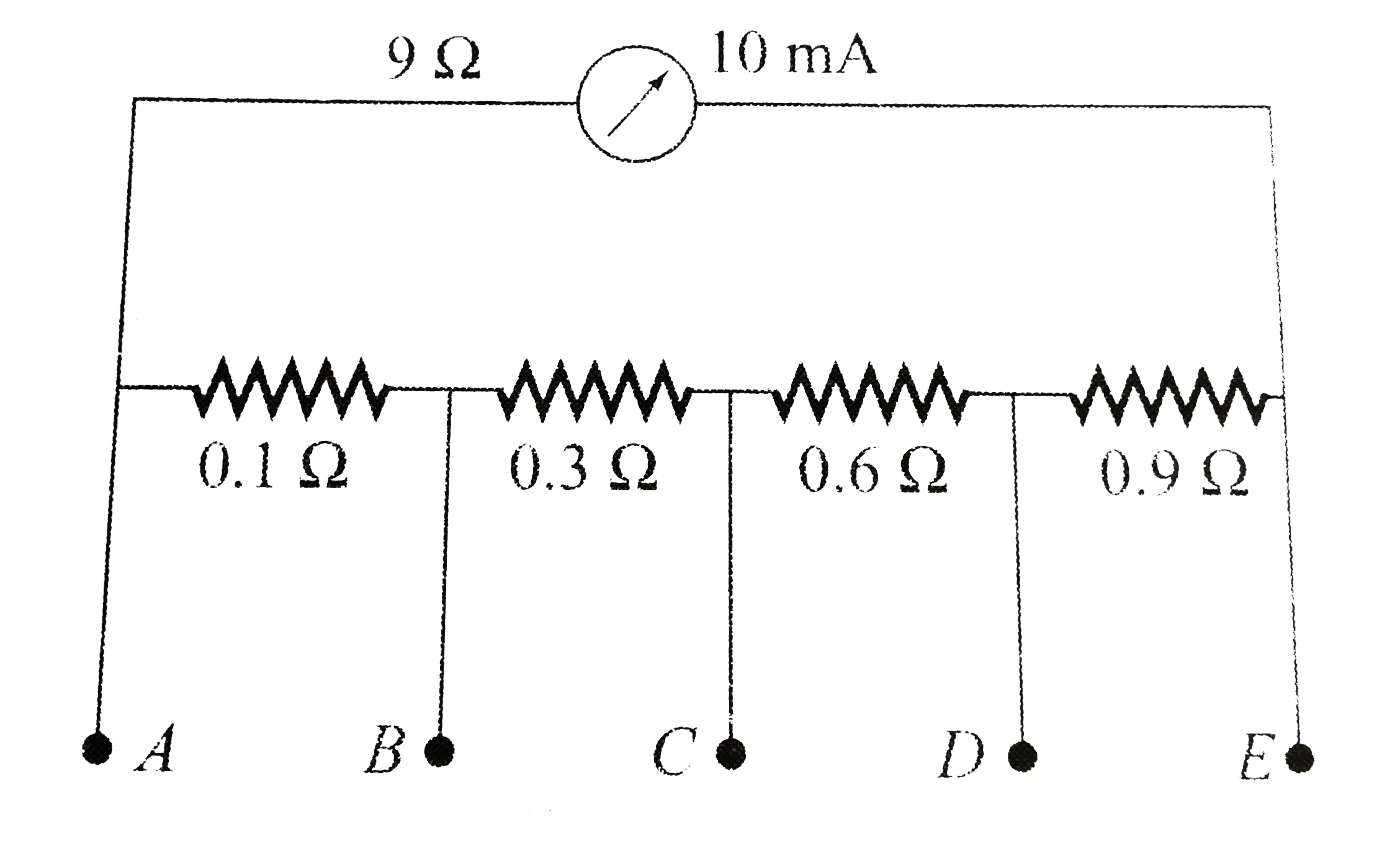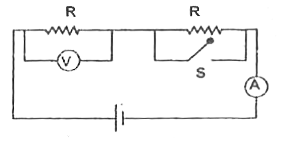In specific resistance measurement of a wire using a meter bridge, the key k in the main circuit is kept open when we are not taking readings. The reason is
the emf of cell will decrease.
the value of resistance will change due to joule heating effect.
the galvanometer will stop working.
none of these
The correct Answer is:B
To answer the question regarding why the key k in the main circuit is kept open when not taking readings in the specific resistance measurement of a wire using a meter bridge, we can follow these steps:
1. Understanding the Setup: In a meter bridge experiment, we measure the resistance of a wire by balancing it against known resistances. The key k is part of the circuit that allows current to flow through the wire.
2. Effect of Current Flow: When the key k is closed, current flows through the wire. This current generates heat due to the resistance of the wire, a phenomenon known as the Joule heating effect.
3. Joule Heating: The heat generated by the current causes the temperature of the wire to rise. As the temperature increases, the resistance of the wire also changes. This is because the resistance of most materials increases with temperature.
4. Impact on Measurements: If the key k is kept closed for an extended period, the continuous heating can lead to a significant change in the resistance of the wire. This change can lead to inaccurate readings when measuring the specific resistance.
5. Conclusion: To ensure accurate measurements, the key k is kept open when not taking readings. This prevents current from flowing through the wire, thereby avoiding any change in resistance due to heating.
Final Answer:
The key k in the main circuit is kept open when not taking readings to prevent the current from flowing through the wire. This avoids the Joule heating effect, which can change the resistance of the wire due to an increase in temperature, leading to inaccurate measurements.
---
The key k in the main circuit is kept open when not taking readings to prevent the current from flowing through the wire. This avoids the Joule heating effect, which can change the resistance of the wire due to an increase in temperature, leading to inaccurate measurements.
Similar Questions
In an experiment on the measurement of internal resistance of as cell by using a potentionmeter, when the key K is kept open then balancing length is obtained at y metre. When the key K is closed and some resistance R is inserted in the resistance box, then the balancing length is found to be x metre. Then the internal resistance is

View SolutionWhen un known resistance and a resistance of 4Ω are used in the left and right gaps of a meter bridge, the balance point is 50cm. the shift in the balance point if a 4Ω resistance is now connected parallel to the resistor in right gap ______
View SolutionUsing the principle of Wheatstone Bridge, describe the method to determine the specific resistance of a wire in the laboratory. Draw the circuit diagram and write the formula used. Write any two important precautions you would observe while performing the experiment.
View SolutionA potentiometer PQ is set up to comapre two resistances as shown in the figure. The ammeter A in the circuit reads 1.0 A when two way key K3 is open. The balance point is at a length l1 cm from P when two way key K3 is plugged in between 2 and 1, while the balance point is at a length l2 cm from P when key K3 is plugged in between 3 and 1. The ratio of the two resistance R1R2, is found to be-

View SolutionA potentiometer PQ is set up to comapre two resistances as shown in the figure. The ammeter A in the circuit reads 1.0 A when two way key K3 is open. The balance point is at a length l1 cm from P when two way key K3 is plugged in between 2 and 1, while the balance point is at a length l2 cm from P when key K3 is plugged in between 3 and 1. The ratio of the two resistance R1R2, is found to be-

View SolutionA milli- ammeter of range 10mA and resistance 9Ω are joined in a circuit as shown in the fig. The meter gives full scale deflection, when current in the main circuit is I, and A and D are used as terminals. The value of I is

View SolutionShow that the percentage error in the measurement of resistance by a metre bridge is minimum when the null point is near about the centre of the wire.
View SolutionIn the circuit in figure, V is high resistance voltmeter and A is a low resistance ammeter. Switch S is open. What is the effect on the voltmeter and ammeter reading when switch S is now closed? Voltmeter reading and Ammeter reading respectively

View SolutionA student performs meter bridge experiment to determine specific resistance of a conducting wire of length 10cm and diameter 1mm. When a standard 6Ω resistance is connected on left gap and the given conducting wire is connected on the right gap, the balance points obtained for 60cm length of the meter bridge wire. The specific resistance in Ω−m for material of the given wire is:
View SolutionA resistance of 2Ω is connected across one gap of a meter bridge (the length of the wire is 100cm) and an unknown resistance, greater than 2Ωis conneted across the other gap. When these resistances are interchanged, the balance point shifts by 20cm. Neglecting any corrections,the unknown resistance is
View Solution